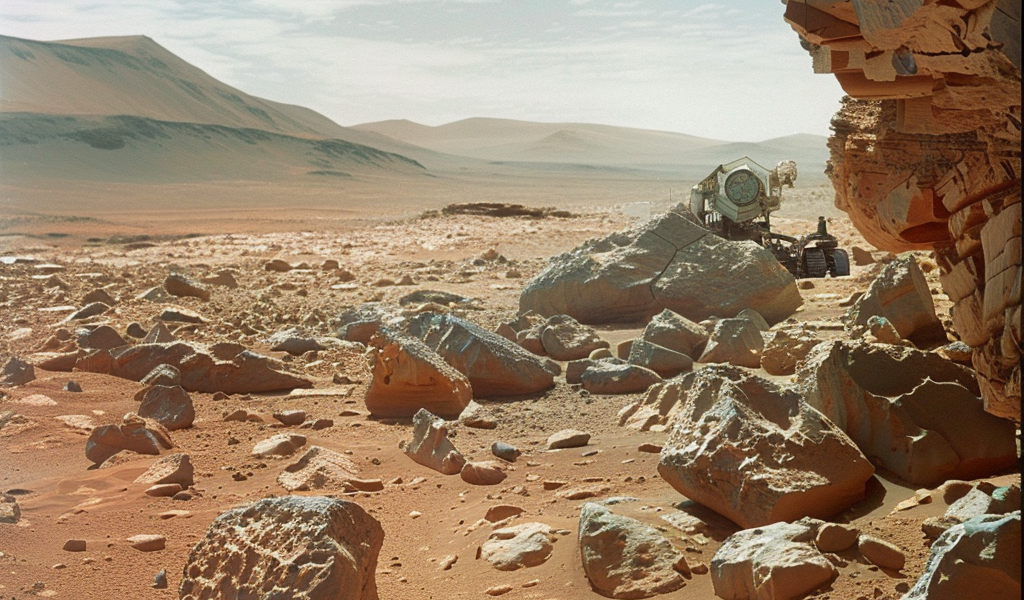NASA’s Curiosity rover continues its exploration on Mars, specifically in the Gale Crater region, searching for clues that could indicate the presence of microbial life. Recent findings suggest that rocks in the area may have formed in an ancient lake on the Red Planet.
Curiosity, which landed on Mars in August 2012, has been diligently studying the geological features of the Gale Crater. One significant discovery made by the rover is the high concentrations of Manganese in the region. Researchers speculate that these deposits of Manganese could have originated in an ancient lake within the crater, raising questions about the history of water on Mars.
A recent paper published in the Journal of Geophysical Research: Planets highlighted the findings obtained using the ChemCam instrument onboard Curiosity. The lead author of the paper, Patrick Gasda from the Los Alamos National Laboratory’s Space Science and Application group, revealed the presence of elevated levels of manganese in rocks at the base of the crater, further supporting the hypothesis of the crater being a remnant of an ancient lake.
The formation of manganese oxide, a mineral found in the Gale Crater rocks, is closely tied to biological processes on Earth. For instance, photosynthesis plays a crucial role in producing atmospheric oxygen, while certain microbes catalyze the oxidation of manganese. However, the absence of confirmed signs of life on Mars complicates the understanding of how these minerals formed in the Martian environment.
The ChemCam instrument, utilizing a laser to create plasma on Martian rock surfaces, has been instrumental in analyzing the composition of various materials found in the region. By studying different types of sediments like sand, silts, and muds, researchers have gained insights into the porous nature of the rocks and the distribution of manganese within them.
While the presence of manganese in the Gale Crater rocks is intriguing, the exact processes that led to its formation remain a subject of ongoing research. The lack of conclusive evidence regarding the past existence of water and life on Mars adds complexity to unraveling the geological history of the Red Planet. Future studies and simulations aided by Curiosity’s observations are expected to shed more light on the mysteries of Mars’ ancient environments.





